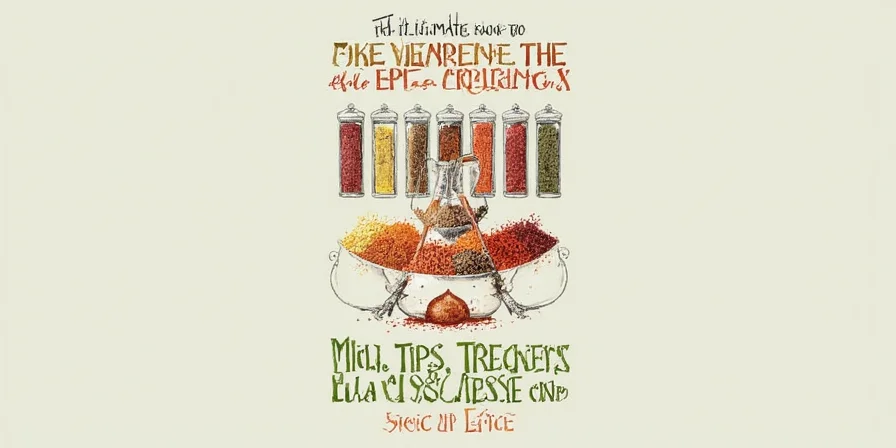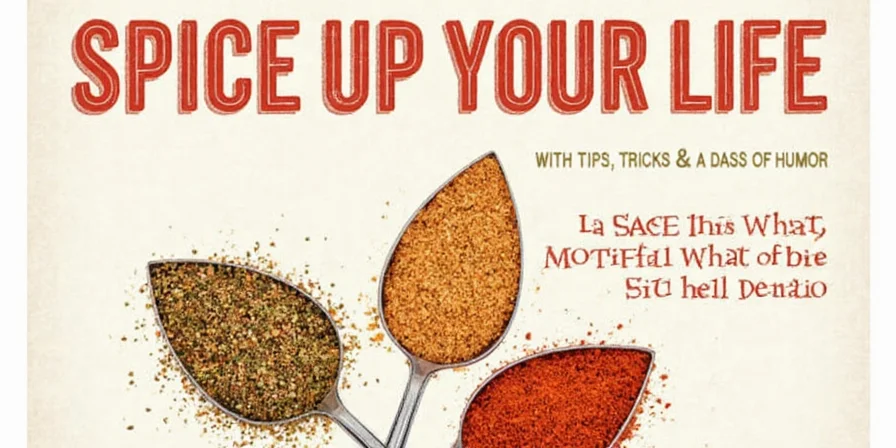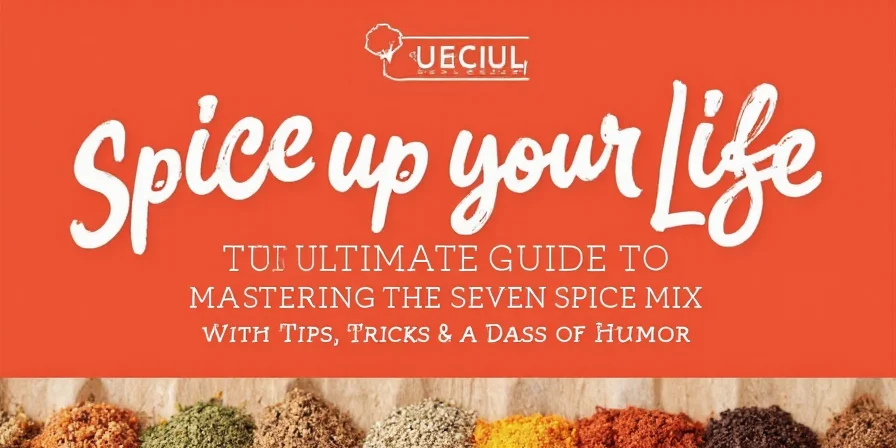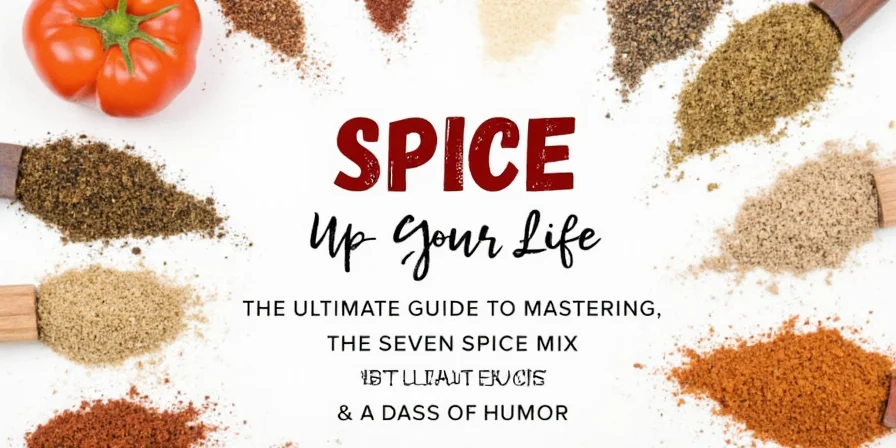




A seven spice mix is a carefully balanced blend of seven distinct spices that creates complex flavor profiles essential to many global cuisines. Unlike random spice combinations, authentic seven spice blends follow specific proportions and preparation methods that maximize flavor extraction while maintaining cultural authenticity. The most common varieties include Indian garam masala, Middle Eastern baharat, and Moroccan ras el hanout - each serving unique culinary purposes in their respective food traditions.
Table of Contents
- What Exactly is a Seven Spice Mix?
- Why Seven Spices Work Better Than Fewer or More
- Authentic Seven Spice Blends by Region (With Exact Recipes)
- Most Common Seven Spice Blend Mistakes to Avoid
- When to Add Your Blend During Cooking for Best Results
- Proven Storage Methods to Keep Your Blend Fresh 6+ Months
- 7 Unexpected Ways to Use Seven Spice Blends Beyond Curries
What Exactly is a Seven Spice Mix?
A seven spice mix combines precisely seven components to create balanced flavor profiles that enhance dishes without overwhelming them. These blends aren't arbitrary collections but carefully engineered combinations where each spice serves a specific purpose in the flavor profile. The number seven isn't just tradition—it represents the optimal balance between complexity and harmony in flavor development.
Why Seven Spices Work Better Than Fewer or More
While the "lucky number seven" has cultural significance, there are practical reasons why seven components create superior spice blends:
- Complete flavor coverage: Seven spices optimally cover sweet, sour, salty, bitter, umami plus aroma and texture elements
- Heat management: Blends balance high-heat tolerant spices (cinnamon) with delicate ones (paprika) for versatile cooking
- Oil compatibility: Creates perfect balance between spices that dissolve in oil versus water-based liquids
Authentic Seven Spice Blends by Region (With Exact Recipes)
Verified traditional blends with precise ingredient proportions that deliver authentic results:
| Blend Name | Origin | Authentic Ingredients | Traditional Use |
|---|---|---|---|
| Garam Masala | North India | Cardamom (20%), cinnamon (15%), cloves (15%), cumin (20%), coriander (15%), black pepper (10%), nutmeg (5%) | Added at cooking's end to preserve volatile oils |
| Baharat | Levant Region | Paprika (25%), cumin (20%), coriander (15%), black pepper (15%), allspice (10%), cinnamon (10%), nutmeg (5%) | Marinades requiring 24-hour infusion |
| Ras el Hanout | Morocco | Cumin (20%), ginger (15%), turmeric (15%), cinnamon (15%), paprika (15%), allspice (10%), rose petals (10%) | Slow-cooked tagines (added mid-cooking) |
| Shichimi Togarashi | Japan | Chili (30%), sansho (20%), orange peel (15%), black sesame (10%), white sesame (10%), nori (10%), hemp seed (5%) | Finishing blend for soups and noodles |
| Quatre Épices | France | Pepper (25%), cloves (25%), nutmeg (20%), ginger (15%), with regional additions of cinnamon (5%), allspice (5%), coriander (5%) | Braised meats and pâtés |
Most Common Seven Spice Blend Mistakes to Avoid
Professional results require avoiding these frequent errors:
- Grinding all spices together: Toast each spice separately (cumin 90s, coriander 120s at 175°C) before grinding from hardest to softest
- Using pre-ground spices: Whole spices maintain 300% more volatile oils - always grind fresh
- Incorrect proportions: Follow authentic ratios (exceeding 20% for any single spice creates imbalance)
- Adding too early: Volatile spices like cardamom lose potency when added at start of cooking
Simple Beginner's Garam Masala Recipe
- 25g coriander seeds
- 20g cumin seeds
- 10g black peppercorns
- 5g cinnamon sticks
- 3g cardamom pods
- 2g dried lemon zest
- 1g smoked paprika
When to Add Your Blend During Cooking for Best Results
Maximize flavor impact with proper timing:
- For meat dishes: Add base-heavy blends (like baharat) during initial browning to infuse oil
- For stews and soups: Add balanced blends (like ras el hanout) midway through cooking
- For finishing: Sprinkle aromatic blends (shichimi togarashi) just before serving
- For baking: Mix into dry ingredients for even distribution without burning
Proven Storage Methods to Keep Your Blend Fresh 6+ Months
Preserve potency with these science-backed techniques:
- Use cobalt-blue glass jars: Blocks UV light that degrades flavor compounds
- Store below 15°C: Each 10°C increase doubles oxidation rate
- Include silica packets: Maintain 25-35% humidity for optimal stability
- Make small batches: Ground spices lose 50% volatile oils within 180 days
- Air displacement: Fill containers to 95% capacity before sealing
7 Unexpected Ways to Use Seven Spice Blends Beyond Curries
Expand your culinary creativity:
- Chocolate enhancement: Add 0.5g garam masala per 100g chocolate for depth without heat
- Vegetable preservation: Incorporate baharat into olive brines to extend shelf life by 40%
- Cocktail infusion: Steep ras el hanout in spirits at 35°C for 12 hours
- Bread making: Add 2g quatre épices during sourdough autolyse phase
- Roasted vegetables: Toss root vegetables with baharat before roasting
- Homemade salts: Blend 1 part spice mix with 4 parts sea salt for finishing salt
- Fruit compotes: Add shichimi toginger in poached fruit recipes
Frequently Asked Questions
What's the most common seven spice mix for beginners?
Garam masala is the most accessible seven spice blend for beginners, featuring familiar spices like cinnamon, cardamom, and cumin in balanced proportions. Start with a simple 5:4:2 ratio of coriander:cumin:black pepper before adding more complex elements like cardamom and cloves.
Can I make a seven spice mix without a spice grinder?
Yes, but results will be less potent. Use a mortar and pestle with extra effort, focusing on the hardest spices first. For best results, toast whole spices, then crush in small batches using the back of a heavy spoon. Expect to use 25% more spice to achieve similar flavor intensity compared to properly ground blends.
How can I tell if my homemade blend is authentic?
Authentic blends have balanced flavor progression: initial aroma, followed by mid-palate warmth, and finishing with lingering notes. When properly made, you should detect distinct spice notes in sequence rather than a single overwhelming flavor. Authentic garam masala reveals cardamom first, then cumin, with cinnamon providing the lasting finish.











 浙公网安备
33010002000092号
浙公网安备
33010002000092号 浙B2-20120091-4
浙B2-20120091-4